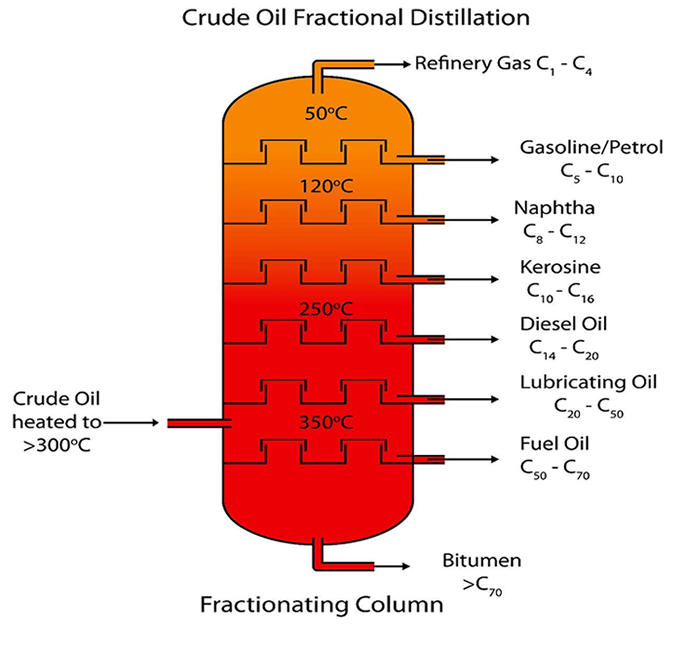Lubricants are gradually contaminated with moisture and mechanical impurities during use. Even without the presence of metals and other catalysts, pure liquid water promotes oxidation of the oil.
However, in actual use, the lubricant is always in contact with the metal. After water is contained in the oil, the oxidation of the oil is actually accelerated by the joint promotion of water and metal. From the monitoring data, the oxidation rate at this time is much faster than when the metal is present alone. In the presence of water, the oxidation time is shortened by 73%, and the acid value is also increased by 11 times.
Different metals have different catalytic oxidation capacities, copper is the most catalytically active, and iron has a certain catalytic activity. Most of the parts of the machine are made of ferrous metal. The worn metal powder is mainly iron in the form of mechanical impurities. Although the catalytic oxidation ability of iron is worse than copper, it is not too bad. Copper reduces the oxidation time by a factor of six while also increasing the acid value by a factor of four. Iron increased the acid value by a factor of 2.8 under the same oxidation time.
The above data prove that after the lubricating oil is contaminated by foreign water and metal powder rubbed by dust and dust, even if the use time is short, the basic quality of the oil has not changed too much, and it is necessary to re-purify the oil and remove the water. This is important to enhance equipment maintenance and extend the life of the lubricant. Therefore, the repurification process is widely used in oil users.
- Re-purification of diesel engine oil for diesel locomotives
Diesel locomotives must be overhauled regularly. In the center overhaul workshop, a large number of diesel locomotives should be repaired every year. During overhaul, all the lubricating oil in the diesel engine crankcase on the diesel locomotive should be discharged and replaced with new oil.
A southern US railroad began researching the way its huge fleet of vehicles reduced oil consumption since the 1973 oil crisis. The main recommendation of this research is to regenerate waste engine oil. This center overhaul workshop will overhaul about 300 diesel locomotives every year, and all the used internal combustion engine oils will be analyzed and tested. Among them, the lighter quality can be regenerated by means of repurification, pumped into a 40m3 storage tank, and the sedimentation is dehydrated. After settling and separating water miscellaneous, the oil pump in the tank is pumped out and sent to a small tank with two 6W electric heaters. The oil is heated to 7, then filtered into two tundishes with seven standard filters for locomotives in series. The filtered oil is recycled back to the tank.
Whether it can be regenerated by means of re-purification is measured by the standards set by ourselves. General standards and stricter standards are formulated. According to general standards, renewable waste oil accounts for 70% of the total waste oil; according to stricter standards, only 60% of the total waste oil is renewable.
After repeated filtration, the content of pentane insoluble substances and metals in renewable waste oil will decrease significantly, and the pH value will increase. Calcium content in regenerated oil reflects the level of high alkaline additives such as high alkaline calcium sulfonate, because American diesel locomotives burn sulfur-containing diesel oil, requiring sufficient neutralization capacity of lubricating oil.
By mixing 60% of the regenerated oil with 40% of the new oil and adding 0.94% (w/y) high alkaline additives, the total alkali value of the blended oil can be increased to about 8, which is equivalent to 75% – 80% of the new oil alkali reserves, and then loaded into the diesel locomotive after overhaul. As a result of the implementation of this plan, the consumption of new diesel oil will be reduced by about 200 per year.
- Other Re-purification Technologies of Waste Internal Combustion Engine Oil
Japan has reported that the waste internal combustion engine oil is pumped out from the oil pan of the internal combustion engine, sent to a centrifuge at high speed to remove water and impurities, and then the purified internal combustion engine oil is sent back to the oil pan.
Japan also has patented reports that waste gasoline engine oil is heated and steam stripped to remove water and gasoline. Only slightly heated and stripped with low pressure steam.
There is a patent report in the United States that waste gasoline engine oil is heated and fed into a cyclone-flowing container to vaporize water and gasoline and separate it from the oil. Waste oil from water and gasoline is removed and then filtered through a filter to remove mechanical impurities. The filter is a spring-compacted (fibre) filter layer.

